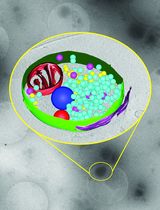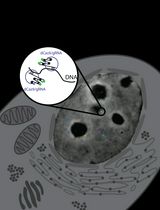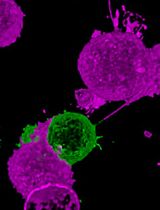- EN - English
- CN - 中文
Fluorescent Measurement of Synaptic Activity Using FM Dyes in Dissociated Hippocampal Cultured Neurons
使用FM染料对分离的海马培养神经元中的突触活动进行荧光测定
发布: 2018年01月20日第8卷第2期 DOI: 10.21769/BioProtoc.2690 浏览次数: 10903
评审: Xi FengLu HanAnonymous reviewer(s)
Abstract
Release and recycling of synaptic vesicles are essential for neurotransmission and synaptic plasticity. To gain mechanistic understanding of these processes, direct measurements of vesicle release and retrieval is indispensable. Styryl dyes like FM1-43 and FM4-64 have been widely used for this purpose and their loading and unloading are reliable measurements for synaptic vesicle release and retrieval in cultured neurons. This protocol describes in detail the procedure of using styryl dyes to label and measure synaptic vesicle uptake and release in cultured rat hippocampal neurons. We also include a brief description of hippocampal culture. In the end, we briefly discuss the commonality and difference among FM dye, pH-sensitive fluorescent proteins and quantum dots in terms of measuring synaptic vesicle behavior.
Keywords: FM1-43 (FM1-43)Background
Synaptic vesicles are indispensable for neurotransmission since they are the only organelle responsible for neurotransmitter release in chemical synapses. Their amount, release probability, fusion kinetics and recycling routes define synaptic transmission and neuronal communication. Various tools have been developed to probe synaptic vesicles, including electrophysiological recording of postsynaptic neurons, capacitance measurement of membrane trafficking, amperometry of oxidizable transmitters, electron microscope imaging of fixed synapses, and fluorescence imaging of vesicular labels in live neurons. Among all existing methods, the last is the only one that not only yields both spatial and temporal information about individual synapses but also provides high throughput (i.e., more data points from single synapses of different neurons). Various fluorescent probes based on different targeting and reporting mechanisms have been developed. Styryl dye (i.e., FM dyes including FM1-43, FM4-64, FM5-95), invented more than twenty years ago, remains a reliable and convenient tool. Due to its moderate affinity to lipid membrane and its lipid-sensitive emission, it can be readily loaded into recycled synaptic vesicles and released when those vesicles are exocytosed. Using more sensitive photodetectors like EMCCD, FM dyes can report single vesicle release events. Here, we provide a relatively complete description of FM-based imaging of synaptic vesicle release in primary cultures of rodent hippocampal neurons. In addition, we also discuss the commonality and the distinction between FM dyes and other fluorescent vesicle labels.
Materials and Reagents
- Pasteur pipette 9 in, cotton-plugged (Fisher Scientific, catalog number: 13-678-8B )
- Pasteur pipette 5.75 in (Fisher Scientific, catalog number: 13-678-20A )
- 24-well plates (Corning, Costar®, catalog number: 3524 )
- Kimwipes (KCWW, Kimberly-Clark, catalog number: 34155 )
- Round 12 mm-Ø glass coverslips #0 (Thermo Fisher Scientific, special order, 0.085 mm thick)
- Aluminum foil (WebstaurantStore Food Service Equipment and Supply Company, Choice, catalog number: 12224X1HD )
- Platinum wires (Alfa Aesar, catalog number: 10286 )
- 24 x 40 coverslips (Fisher Scientific, special order), all 0.085 mm thick (i.e., size 0)
- Parafilm PM-996 (Bemis, catalog number: PM996 )
- 30-mm Ø Petri dish (Thermo Fisher Scientific, Thermo ScientificTM, catalog number: 153066 )
- 15 ml conical tubes (Thermo Fisher Scientific, Thermo ScientificTM, catalog number: 339650 )
- 0.2 µm filter (Corning, catalog number: 431218 )
- 50 ml conical tubes (Thermo Fisher Scientific, Thermo ScientificTM, catalog number: 339652 )
- 1.7 ml tubes (Corning, Axygen®, catalog number: MCT-175-C )
- Neonatal rat hippocampal neurons (P0-P3)
- Trypsin-EDTA (trypsin: 0.025%/EDTA: 0.01%) (Thermo Fisher Scientific, GibcoTM, catalog number: R001100 )
- Minimum Essential Medium (MEM, 1x) (Thermo Fisher Scientific, GibcoTM, catalog number: 51200038 )
- Glucose (Thermo Fisher Scientific, GibcoTM, catalog number: 15023021 )
- Sodium bicarbonate (NaHCO3) (Sigma-Aldrich, catalog number: S5761 )
- Transferrin (Sigma-Aldrich, catalog number: T1428 )
- L-glutamine (Thermo Fisher Scientific, catalog number: 25030081 )
- Insulin (Sigma-Aldrich, catalog number: I5500 )
- Fetal bovine serum (Thermo Fisher Scientific, GibcoTM, catalog number: 26140079 )
- Matrigel (Corning, catalog number: 354234 )
- 70% EtOH (Decon Labs, catalog number: 2401 )
- Ara-C (Cytarabine) (Sigma-Aldrich, catalog number: C1768 )
- B27 supplement (Thermo Fisher Scientific, GibcoTM, catalog number: 17504044 )
- Vacuum grease (Dow Corning, catalog number: 1597418 )
- FM1-43 (Biotium, catalog number: 70022 )
- 2,3-Dioxo-6-nitro-1,2,3,4-tetrahydrobenzo[f]quinoxaline-7-sulfonamide disodium salt (NBQX) (Abcam, catalog number: ab120046 )
- D-(-)-2-Amino-5-phosphonopentanoic acid (D-AP5) (Abcam, catalog number: ab120003 )
- N-2-hydroxyethyl piperazine-n-2 ethanesulphonic acid (HEPES) (Sigma-Aldrich, catalog number: H4034 )
- DNase (Sigma-Aldrich, catalog number: D5025 )
- 10 mM HCl (diluted with ddi water 1:100 from 1 N solution) (Sigma-Aldrich, catalog number: H9892 )
- Sodium chloride (NaCl) (Fisher Scientific, catalog number: S641-212 )
- Potassium chloride (KCl) (Sigma-Aldrich, catalog number: P5405 )
- Magnesium chloride hexahydrate (MgCl2·6H2O) (Fisher Scientific, catalog number: BP214 )
- Calcium chloride dihydrate (CaCl2·2H2O) (Acros Organics, catalog number: 207780010 )
- Matrigel stock solution (see Recipes)
- Hanks solution (see Recipes)
- Hanks + 20 (H + 20) (see Recipes)
- Dissociation solution (see Recipes)
- DNase solution (see Recipes)
- 2 mM Ara-C stock (see Recipes)
- Plating medium (see Recipes)
- Ara-C solution (see Recipes)
- Extracellular bath Tyrode’s saline (see Recipes)
- 90 K (High Potassium Tyrode’s) (see Recipes)
Equipment
- Bunsen burner (Sigma-Aldrich, catalog number: Z270326 )
- 250 ml beaker (Fisher Scientific, Fisherbrand, catalog number: FB100250 )
- Pyrex beaker (Corning, PYREX®, catalog number: 1000-100 )
- Inverted microscope (20x lens, Mercury arc lamp, filters for EGFP) (Nikon Instruments, model: Eclipse Ti-E )
- Electric field stimulation chamber (two platinum wires glued to the sides of RC-26G perfusion chamber) (Warner Instruments, model: RC-26G )
- PH-1 platform (Warner Instruments, model: PH-1 )
- Six Channel Perfusion Control Valve System (Warner Instruments, model: VC-6 )
- Inline heater (e.g., Warner Instruments, catalog number: 64-0104 )
- TC-344B Dual Channel Temperature Controller (Warner Instruments, model: TC-344B )
- Prior Lumen 200 Illuminator (Prior Scientific, model: Lumen 200 )
- Cell culture hood, CO2 incubator
- Set of dissection tools (Fine Science Tools)
- Stimulus Isolator SD9 (Grass Instruments, model: SD9 )
- Digidata 1440A (Molecular Devices, model: Digidata 1440A )
- Dissection microscope (Nikon Instruments)
- Centrifuge (Eppendorf, model: 5702 R )
- Computer with time-lapse imaging system
- Computer with Clampex software
- Andor iXon Ultra EMCCD (Andor)
- Vibration Isolation table (Newport)
Software
- Micro-Manager (Schneider et al., 2012) or Fiji (Schindelin et al., 2012)
- Clampex (Molecular Devices)
- Microsoft Excel (Microsoft)
Procedure
文章信息
版权信息
© 2018 The Authors; exclusive licensee Bio-protocol LLC.
如何引用
Lazarenko, R. M., DelBove, C. E. and Zhang, Q. (2018). Fluorescent Measurement of Synaptic Activity Using FM Dyes in Dissociated Hippocampal Cultured Neurons. Bio-protocol 8(2): e2690. DOI: 10.21769/BioProtoc.2690.
分类
神经科学 > 细胞机理 > 突触生理学
细胞生物学 > 细胞成像 > 活细胞成像
您对这篇实验方法有问题吗?
在此处发布您的问题,我们将邀请本文作者来回答。同时,我们会将您的问题发布到Bio-protocol Exchange,以便寻求社区成员的帮助。
提问指南
+ 问题描述
写下详细的问题描述,包括所有有助于他人回答您问题的信息(例如实验过程、条件和相关图像等)。
Share
Bluesky
X
Copy link












